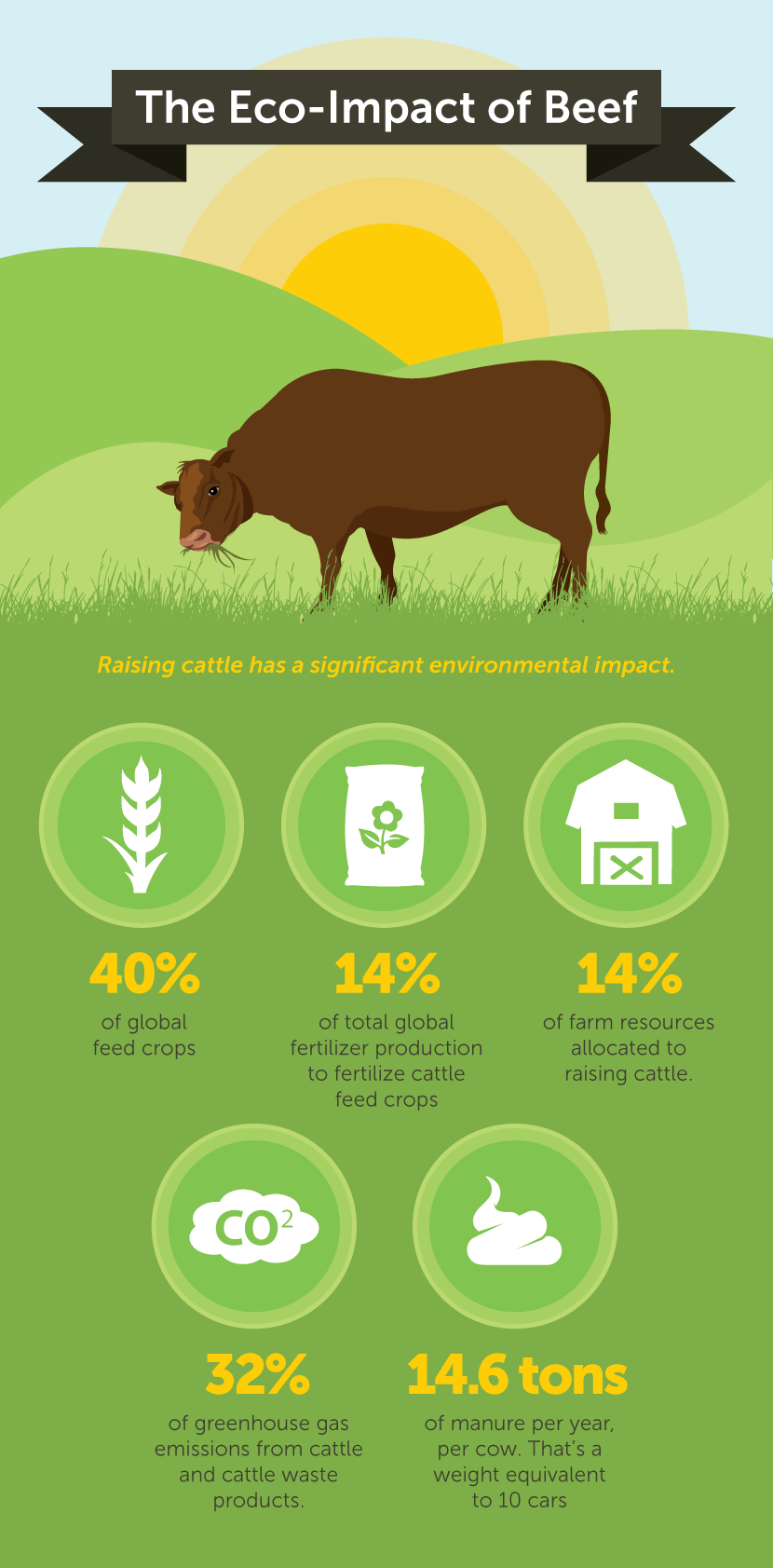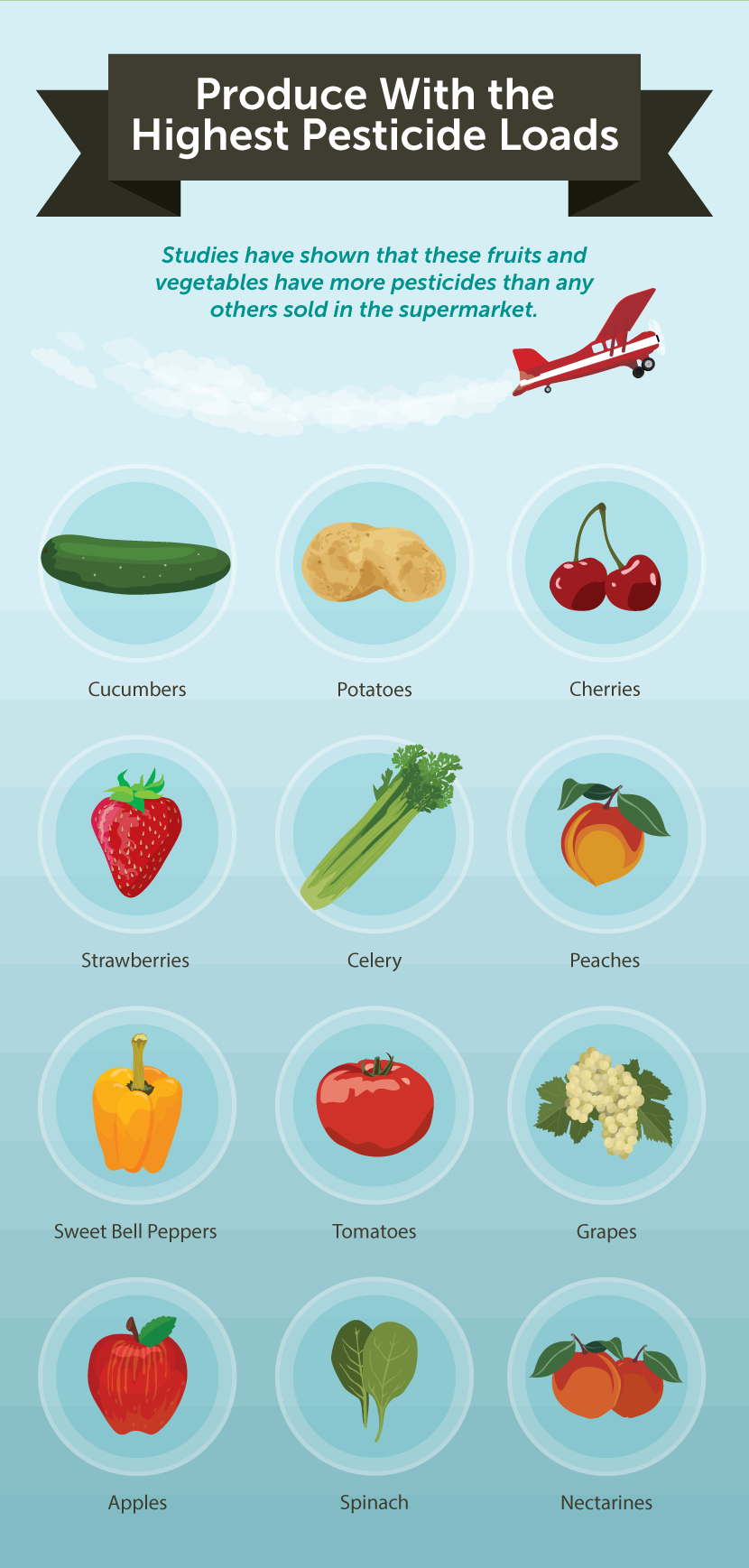Become an Eco-Conscious Eater
Embrace a Diet That Is Healthy for You and the Planet
The kitchen might be the heart of the home, but it’s also the room in the house with the biggest environmental impact. A quick look in the refrigerator might reveal imported avocados, peanut butter made with palm oil, and packages of greenhouse gas-producing meats.
Adopting a vegetarian or vegan diet has long been hailed as a smart choice for the planet.
A report from the Food and Agriculture Organization (FAO) of the United Nations notes that 26 percent of global lands are used for livestock grazing and 33 percent of croplands are used for livestock feed production.
It takes 200 million acres of land to produce enough grain and hay to raise all the cows, pigs, and chickens in the nation, along with 181 million pounds of pesticides, 22 billion pounds of fertilizer, and 17 trillion gallons of water.
Livestock like cows, chickens, pigs, and goats also produce methane, contributing to greenhouse gas emissions.
Despite the toll raising livestock takes on the environment, FAO estimates that global meat production will increase from 229 million tonnes in 1999 to 465 million tonnes in 2050.
Given the data, is adopting a meatless vegetarian diet or a vegan diet with zero animal products, including meat, eggs, and dairy products, the best choice?
The idea of adopting a vegetarian diet for environmental reasons was first introduced in 1971 when Frances Moore Lappé released her book Diet for a Small Planet. Since then, vegetarian and vegan diets have become mainstream.
In 2015, U.S. Office of Disease Prevention and Health Promotion released a report noting that “[A] diet higher in plant-based foods, such as vegetables, fruits, whole grains, legumes, nuts, and seeds, and lower in calories and animal-based foods is … associated with less environmental impact than is the current U.S. diet.”
But new research refutes the idea that eschewing meat and other animal products is best for the environment. In fact, researchers at Carnegie Mellon University found that diets with more fruits and vegetables and less meat are worse for the environment than traditional meaty American meals.
Vegetarian diets, the authors found, would lead to a 38 percent increase in energy use, a 10 percent increase in water use, and a 6 percent increase in greenhouse gas emissions.
While there is not one perfect diet for the planet, there are myriad ways to minimize the environmental impact of your food choices.
Become a Reducetarian: “Reducetarian” is a term used to describe those who are committed to eating less meat and fewer animal products such as eggs, milk, and cheese. As its name suggests, the movement is about reducing the animal products in your diet, which differs from vegetarian and vegan diets, which emphasize elimination of some or all animal products.
The Reducetarian Foundation promotes the idea, which was founded on the principle that reducing the consumption of animal products is better for the environment, human health, and farm animals.
The Foundation has an online pledge with four different strategies to eat less meat: Meatless Mondays, vegetarian before 6 p.m., weekday vegetarian, and everyday vegetarian with information on how to stay committed to eating less meat for 30 days.

Eat less red meat: There is no question that producing red meat takes a toll on the environment.
Research published in the journal Proceedings of the National Academy of Sciences found that it takes 28 times more land and 11 times more water, and results in five times more emissions, to produce beef than pork or chicken. The researchers concluded that giving up red meat would have a bigger impact on the environment than giving up cars.
Shop local: If the oft-cited statistic that the average meal travels 1,500 miles before it reaches your plate is not reason enough to look for locally grown foods, consider this: Researchers found that the conventional food system uses up to 17 times more fuel and emits 17 times more CO2, a harmful greenhouse gas, than foods grown closer to home. Local food, according to the 2008 Farm Act, includes all foods grown within a 400-mile radius.
Thanks to an abundance of farm stands, farmers markets, U-pick operations, and community-supported agriculture programs, finding local food is easier than ever. Most cities also have options for “farm to table” dining, which means your restaurant meals can also be better for the environment.

Opt for organics: The adage is true: You are what you eat – and that’s bad news considering the number of chemicals that are used to grow crops and raise livestock.
In tests, the USDA found 146 different pesticides on fruit and vegetable samples; the residues remained even after the produce was washed and, often, peeled. The Environmental Working Group reports that noshing on the most contaminated crops – a list dubbed the Dirty Dozen – could mean ingesting up to 10 different pesticides in a single day!
Foods with the “organic” label are grown without chemicals, which means toxins from pesticides and fertilizers aren’t contaminating the soil, air, and water. Some studies show that organic foods are healthier, too, and contain more vitamins and nutrients than their non-organic counterparts.

Calculate your carbons: Curious about the environmental impact of your diet? It’s easier than ever to calculate the environmental impact of various foods thanks to Eat Low Carbon , an interactive website from the Bon Appétit Management Company.
The site allows you to compare the carbon footprint of your food choices. For example, cereal with a banana emits 1,148 grams of CO2 while three-bean soup emits just 54 grams of CO2. The site also has tips to help you lower the carbon footprint of your diet.
The more you know about the environmental impact of your food choices, the more effectively you can make decisions about the foods you eat.
Embed the article on your site

